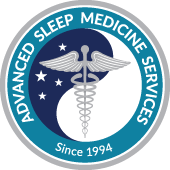If you have trouble falling asleep or staying asleep, or if you find yourself nodding off during the day, you’re not alone. According to the Centers for Disease Control and Prevention (CDC), sleep disorders are so pervasive in the United States that they now constitute a public health epidemic. Research conducted by the CDC indicates that large numbers of Americans experience problems associated with lack of sufficient sleep. For example:
- 23.2% of survey respondents (almost 50 million people) reported problems concentrating during the day
- 11.3% (24 million) indicated lack of sleep interfered with driving
- 8.6% (18 million) reported that sleep deficiency interfered with job performance.
A Dangerous Diagnosis
CDC’s raising of sleep disorders to epidemic status reflects growing concerns regarding the dangers associated with insufficient sleep. Increasingly, sleep disorders such as insomnia and obstructive sleep apnea are placing those who suffer from these conditions and the public at large at greater risk of car crashes, medical mistakes and industrial accidents. In addition, sleep disorders represent an increasing risk to public health, contributing to a host of medical conditions, including cancer, obesity, diabetes, depression and hypertension.
Two Important Studies
In collaboration with the National Center on Sleep Disorders Research, the CDC has conducted two important studies aimed at quantifying the nature and extensiveness of sleep disorders in the United States. The first, the Behavioral Risk Factor Surveillance System (BRFSS), examined the problem along socio-demographic dimensions. Findings included:
- Those age 65 and older were most likely to report unintentionally falling asleep during the day (44.6%), and Black Americans (52.4%) were more likely to experience this problem than either Hispanics (41.9%) or Whites (33.4%)
- Those age 25 to 34 were more likely to fall asleep while driving (7.2%) than those age 65 or older (2.0%), and men were more likely to experience this problem (5.8%) than women (3.5%)
The second study, the National Health and Nutrition Examination Survey (NHANES), looked at the prevalence of “short sleep duration” along racial and age dimensions, finding that:
- Those age 40 to 59 were most likely to have short sleep duration (40.3%) as compared with those age 60 or older (32.0%)
- Black Americans were more likely to experience this problem (53.0%) as compared with Whites (34.5%) and other races (41.7%)
How Much Sleep You Need is A Function of Age
Concepts such as “short sleep duration” beg the question of how much sleep is enough. According to the National Institutes of Health (NIH), you need different amounts of sleep as you age. Children of school age, for example, require no less than 10 hours of sleep per day. This drops to 9 hours of sleep during the teen years, and to 7 to 8 hours among adults. That said, some 30% of all Americans reported getting 6 or less hours of sleep per day.
These and similar studies are important because they reinforce the notion that sleep disorders represent a significant threat to individual health and public safety. To learn more about sleep disorders—including both diagnosis and treatment—contact us today.
Are you concerned that you or a loved one may suffer from excessive daytime sleepiness? Take our sleepiness quiz and share your results with your physician.
Other posts you may find interesting:
- Effects of Sleep Deprivation on Work Performance
- Drunk Driving vs. Drowsey Driving: The Fatal Mistake Most People Make
- Age and Sleep: How Our Sleep Changes From Childhood to Adulthood
- How Does Sleep Apnea Affect the Heart?
- How Does Sleep Apnea Affect the Brain
- The Link Between Sleep Apnea and Diabetes

